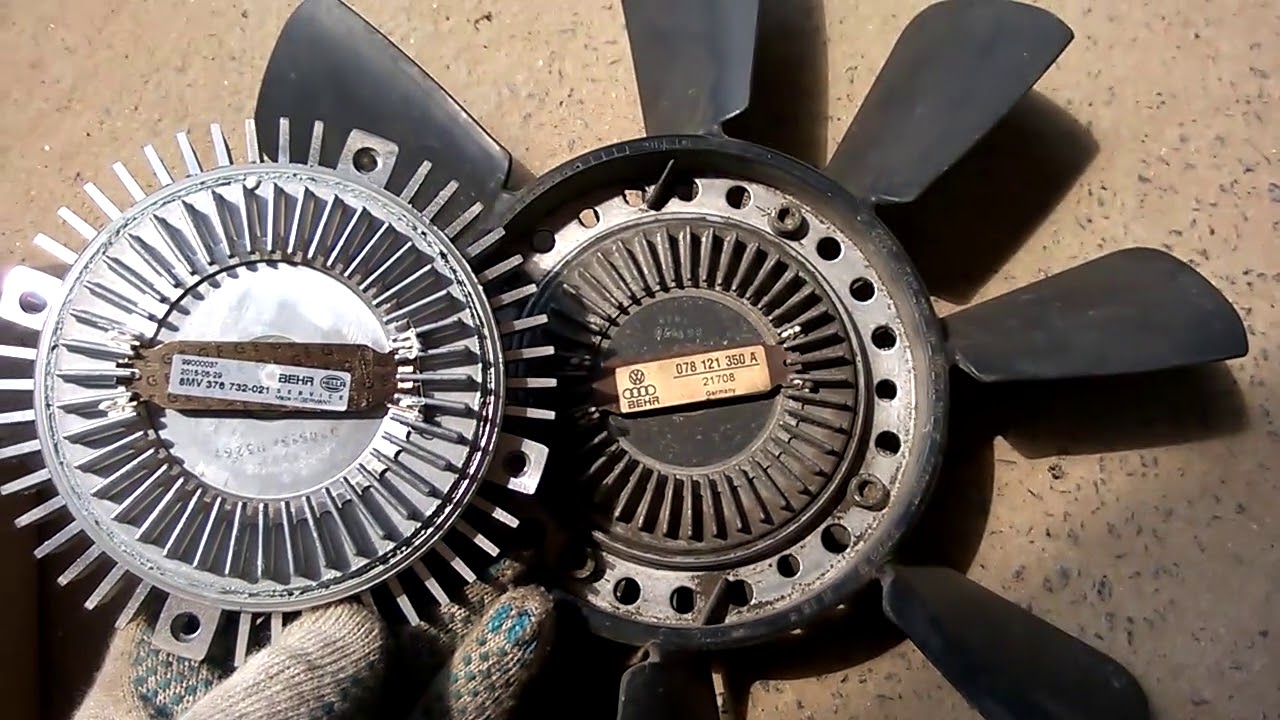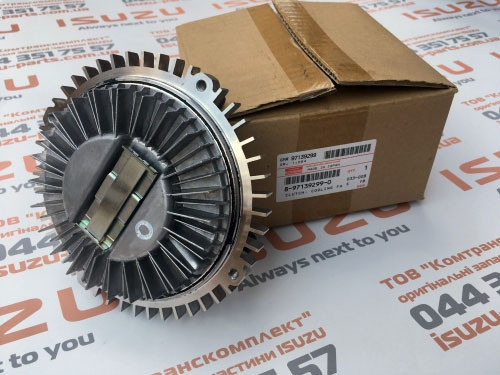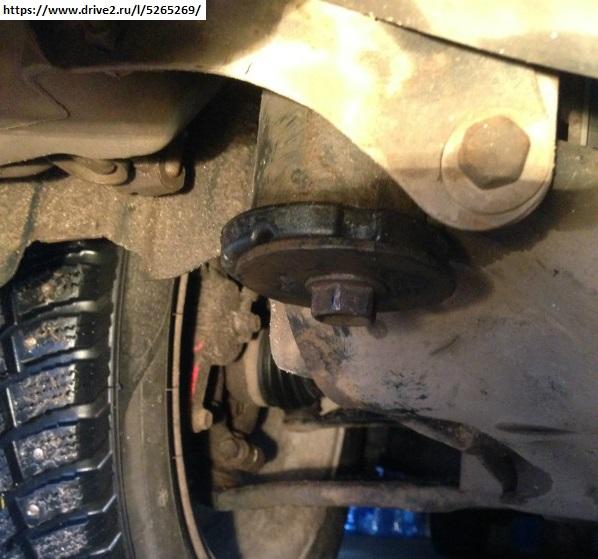
What is a viscous fan coupling
Content
The viscous coupling of the cooling fan (viscous fan coupling) is a device for transmitting torque, while there is no rigid connection between the driving and driven elements.

Thanks to this feature:
- torque can be transmitted smoothly and evenly;
- torque transmission is selective.
In general, a viscous coupling (fan coupling) is a fairly reliable element with a long service life. However, in some cases it is necessary to check the operability of the work, and also to replace or repair the coupling. Read more in our article.
Viscous coupling: device and principle of operation
The viscous fan coupling (fluid coupling) is a fairly simple device and includes the following main elements:
- sealed housing;
- turbine wheels or discs in a casing;
- the wheels are fixed on the driving and driven axles;
- silicone fluid (expander) fills the space between the wheels;
- In general, two main types of viscous couplings can be distinguished. The first type has a housing, inside of which there are turbine wheels with an impeller. One wheel is mounted on the drive shaft and the other on the drive shaft. The connecting link between the turbine wheels is silicone fluid, which is the working fluid. If the wheels rotate at different speeds, the torque is transferred to the drive wheel, the rotation of the wheels is synchronized.
- The second type of clutch differs from the first in that instead of wheels, a pair of flat discs with recesses and holes are installed here. In this case, it is the second type that is usually used as a cooling fan clutch. With the synchronous rotation of the discs inside the clutch housing, the silicone fluid practically does not mix. However, if the slave begins to lag behind the master, the mix is triggered. In this case, the liquid changes its properties (expands) and presses the disks against each other.
- As for the liquid with which the body of the device is filled, the whole principle of operation of the viscous coupling is based on it. At rest, a liquid is viscous and fluid. If you start heating or stirring it, the liquid becomes very thick and expands in volume, its density changes, if you return the liquid to a state of rest and / or stop heating, it will again become viscous and fluid. Such properties allow you to press the discs against each other and block the viscous coupling, "closing" the discs.
Where are viscous couplings used in a car
As a rule, viscous couplings in cars are used only in two cases:
- realize engine cooling (cooling fan);
- connect all-wheel drive (transmission).
The first option has a simple device. A clutch with a fan is fixed on the rod, which is driven through a belt from the engine. At the same time, viscous couplings in this case are more reliable than electric fans, but less efficient in terms of performance.
As for the inclusion of all-wheel drive, the vast majority of crossovers are equipped with a viscous coupling for automatic inclusion of all-wheel drive. At the same time, these clutches are now gradually being replaced by another type in the form of electronic actuators.
The main reason is that viscous couplings are not very easy to maintain (in fact, they are disposable), and also do not transmit torque efficiently enough. For example, four-wheel drive is activated through the clutch only when the front wheels are spinning heavily, when there is no way to force the clutch, etc.
One way or another, even taking into account the shortcomings, viscous couplings are simple in design, cheap to manufacture, durable and reliable. The average service life is at least 5 years, while in practice there are cars from 10 to 15 years with runs from 200 to 300 thousand km, on which viscous couplings work well. For example, the cooling system of older BMW models, where the cooling fan has a similar device.
How to check the viscous coupling
Checking the viscous coupling of the cooling radiator is not a difficult procedure. For a quick diagnosis, check the rotation of the fan both on a hot and cold engine.
If you refill gas, the hot fan spins much faster. At the same time, when the engine is cold, the speed does not increase.
A more thorough check is performed as follows:
- With the engine off, turn the fan blades by hand. Normally, a slight resistance should be felt, while the rotation should be inertialess;
- Next, you need to start the engine, after which a slight noise from the clutch will be heard in the first seconds. A little later, the noise will disappear.
- After the motor has warmed up a bit, try stopping the fan with a folded piece of paper. Usually the fan stops and force is felt. You can also remove the clutch and heat it by placing it in boiling water. After heating, it should not rotate and actively resist rotation. If the hot coupling rotates, this indicates a silicone-based hydraulic fluid leak.
- In this case, it is necessary to check the longitudinal clearance of the device. The presence of such a backlash clearly indicates that the fan fluid coupling needs to be repaired or the viscous coupling needs to be replaced.
Viscous coupling repair
In the event that the motor began to overheat and the problem is related to the viscous coupling, you can try to repair it. The same applies to the drive clutch. The clutch has not been officially repaired, the silicone fluid has not been changed, the bearing has not been changed, etc.
However, in practice, topping up such fluid or replacing the bearing is quite possible, which often allows the device to work again. First you need to buy a suitable viscous coupling oil (you can use the original or an analogue) or a universal type viscous coupling repair fluid.
We also recommend reading the article on how to replace power steering fluid. From this article you will learn when to change the oil in the power steering, what kind of oil to fill in the power steering, and also how to do it yourself.
Next you will need:
- Remove the clutch from the car;
- Unmount the device;
- Place the coupling horizontally and remove the pin under the plate with the spring;
- Find a hole to drain the liquid (if not, make it yourself);
- Using a syringe, pour about 15 ml of liquid into the cuff;
- The liquid is poured in small portions (silicone should spread between the discs);
- Now the clutch can be installed and reinstalled;
If noise is heard during operation of the viscous coupling, this indicates a bearing failure. To replace the viscous coupling bearing, the silicone fluid is first drained (then poured back after replacement). Then the upper disk is removed, the bearing is removed with a puller, the flaring is polished in parallel and a new bearing (closed type) is installed.
It is important to understand that when performing various operations, you must be extremely careful. For example, even a slight deformation of the clutch disc will lead to a complete failure of the device. Also, do not allow dust or dirt to enter the inside of the device, do not remove special grease, etc.
Selection and replacement of the coupling
As for the replacement, it is necessary to remove the old device and put a new one in its place, and then check the performance. In practice, more difficulties arise not with the replacement itself, but with the selection of spare parts.
It is important to select a good quality viscous fan coupling or drive coupling for replacement. To do this, you need to find out the code of the original spare part, after which you can determine the available analogues in the catalogs. You will also need the VIN of the car, make, model, year of manufacture, etc. to accurately select parts. We also recommend reading the article on why the engine overheats. In this article, you will learn about the main causes of engine overheating, as well as available diagnostic and repair methods.
Having figured out which part is needed, you should pay attention to the manufacturer. Given the fact that only a few companies produce viscous couplings, it is optimal to choose among the leading manufacturers: Hella, Mobis, Beru, Meyle, Febi. As a rule, these same manufacturers also produce other parts (cooling radiators, thermostats, suspension units, etc.).
